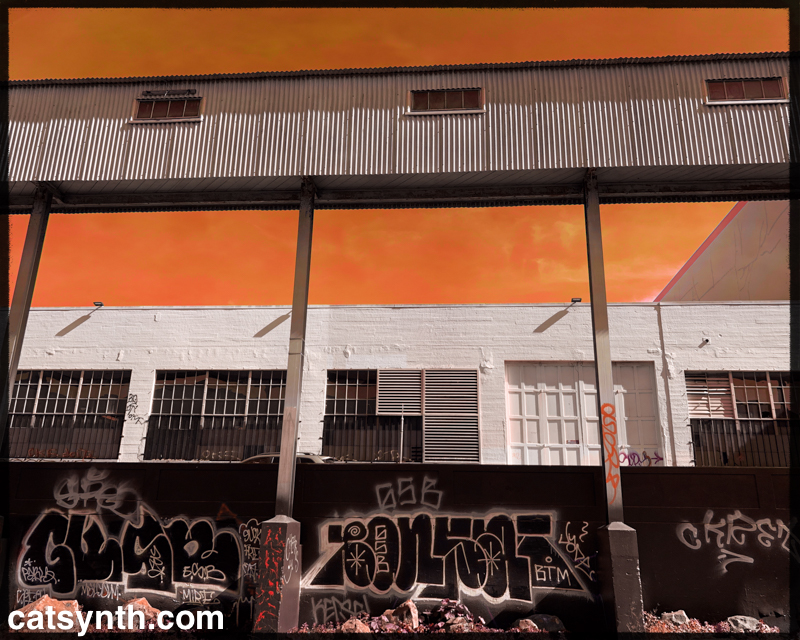
A combination of Hipstamatic presets turns an industrial section of San Francisco into an alien landscape.

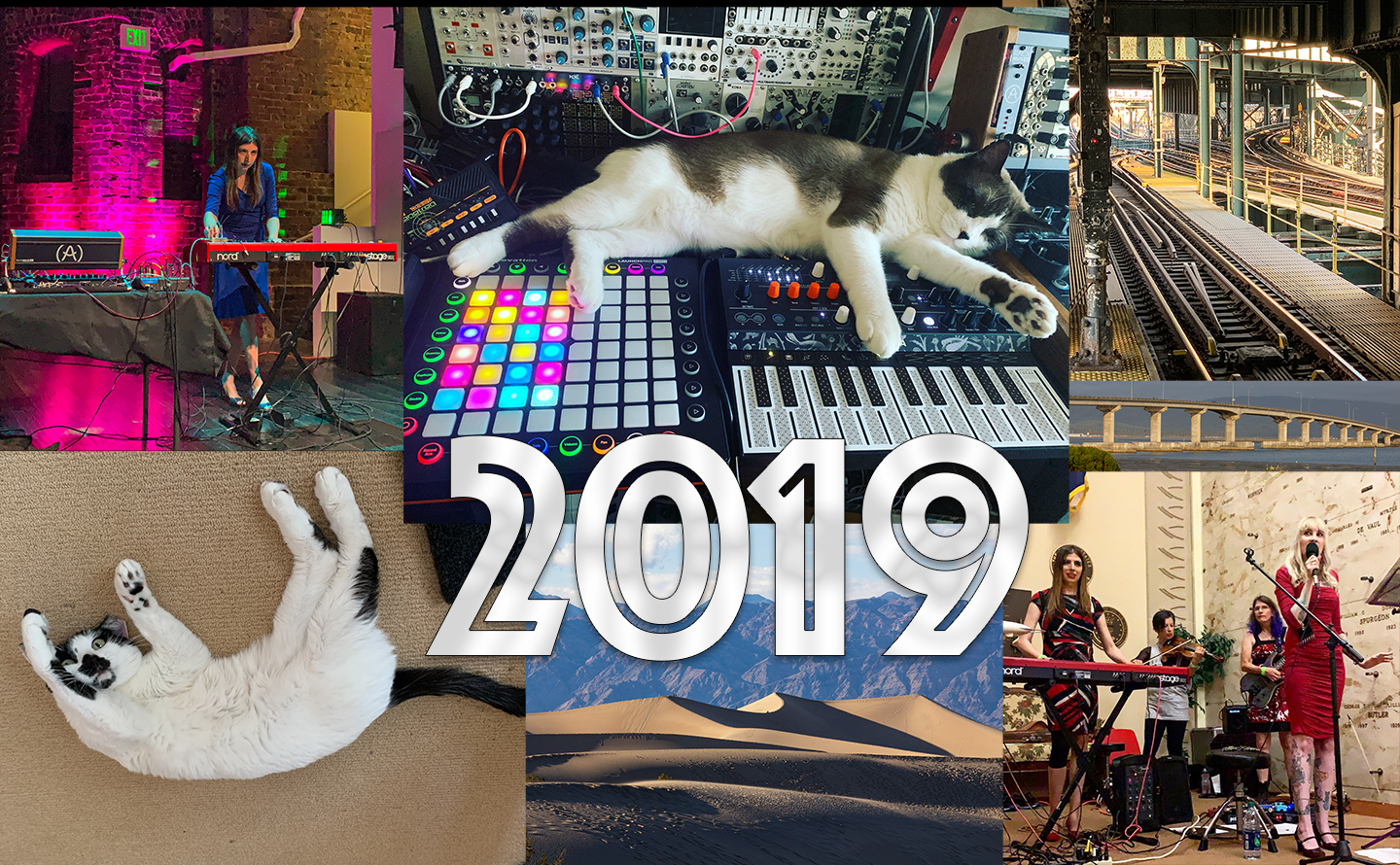
Our year-end collage is a long-standing tradition at CatSynth. And we had a lot of fun making this year’s edition, so many wonderful images to choose from. One of my best solo performances to date took place at the Compton’s Cafeteria series at the Center for New Music. Big Merp came to live with has at CatSynth HQ. And our adventures took us from the halls of NAMM to the bottom of Death Valley to the subways of New York.
As we mentioned at the end of last year, most of the energy has moved to CatSynth TV and our social media platforms (especially our Facebook page). The blog is mostly our core cat-and-synth pics these days, although I do enjoy sharing long-form articles now and then. And In 2020, I do plan to revive the “primary highways” series from eight years ago.
On the video side, things have been going very well. Here are the top videos for 2019:
By early autumn, I was also thinking about this year as a “tipping point.” The transition from the blog to the video channel is the most obvious, but it also applies also on the personal side. The arrival of Big Merp was one of the big stories, and it’s been a tough integration getting both cats to coexist, but things have been trending well in the past few months, with Sam Sam regaining her confidence and HQ becoming a more harmonious place again. Musically, I have moved in a direction that is perhaps closer to my roots in jazz, fusion, funk while maintaining the experimental electronic aspects. I have also moved to a point where studio work is how I spend most of my musical time, between the videos and other projects. Finally, I am getting older, as we all are, and that adds both perspective and a need to focus on health and wellbeing. In 2020, I may “do fewer things” than in the past, but I hope the things I choose to do make an impact both personally and beyond.
There is a lot to look forward to in the coming days: NAMM 2020 is around the corner, I have a full queue of demos to share, and I am laying the foundations for some major musical projects. And of course, we will continue to post cats and synths.
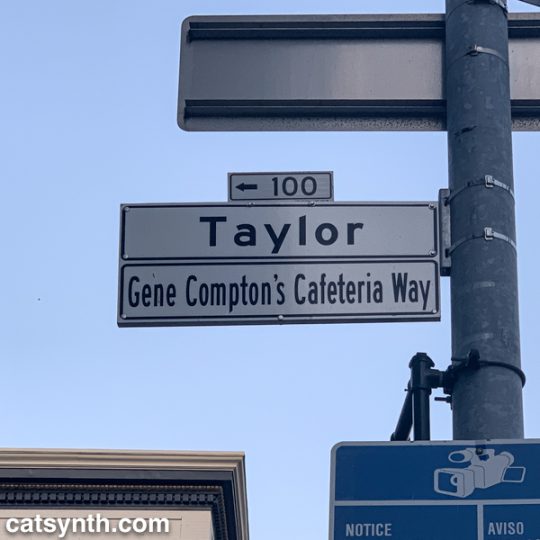
In 2016, the 100 block of Taylor Street (between Turk and Eddy) was designated as Gene Compton’s Cafeteria Way for the 50th anniversary of the Compton Cafeteria Riots, a riot and protest by transgender people, drag queens, and others two years before the famous Stonewall Inn Riot in New York. I happened to be at the unveiling during Pride 2016 and can read my report here.
The Center For New Music, which is half a block north on Taylor Street, is launching a series commemorating its famous neighbor and transgender awareness and activism. I am proud to be one of the inaugural performers: you can find more about the show this Thursday here.
Finally, you can also read my article about walking the entire length of Taylor Street.
We have been having some amazing weather in San Francisco over the past week. Warm, hot even, not too windy. Perfect for spending some time out on the patio. And as I enjoy a glass of wine and some snacks, taking in the sounds and textures of urban summer, Big Merp has discovered that he, too, enjoys some outdoor time.
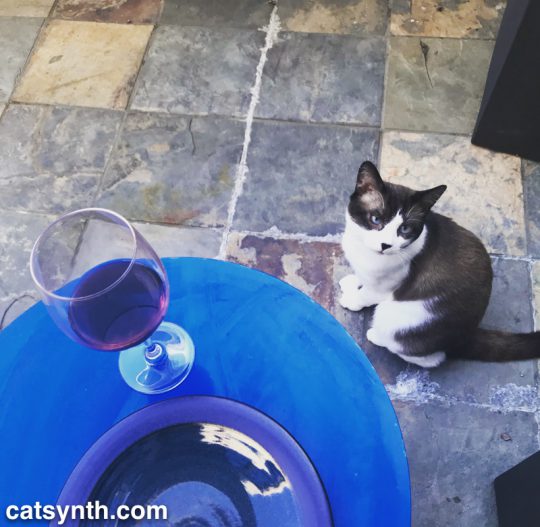
In true cat-like fashion, he wanders the perimeter, and when things seem “secure”, he just relaxes nearby.
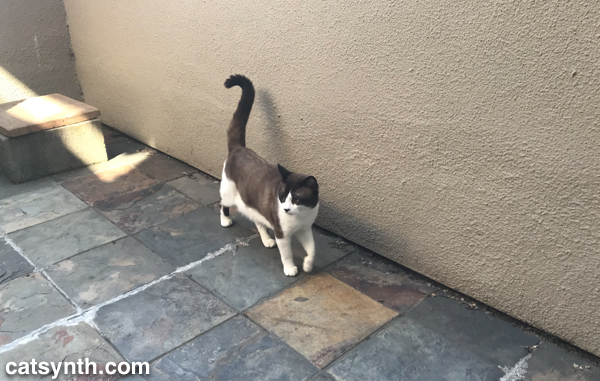
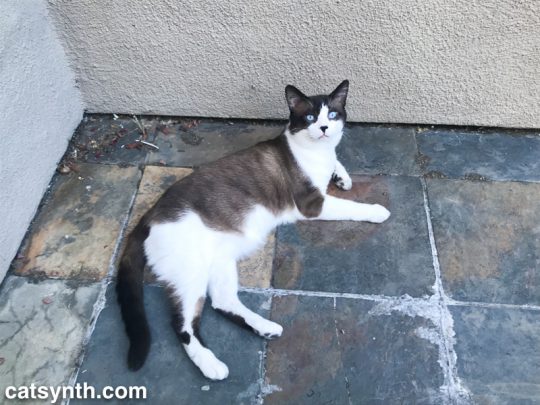
Seeing him wander the patio with his tail up reminded me of Luna, who also enjoyed her time out here. I think she would be proud (Sam Sam is more of an indoor-only cat and has rarely ventured outside, but she enjoys looking out windows).
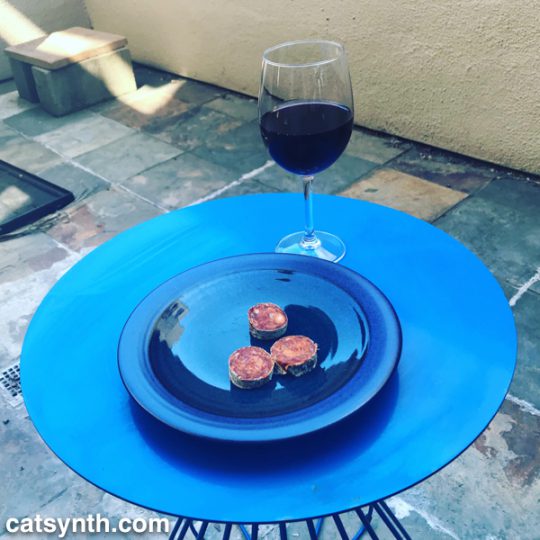
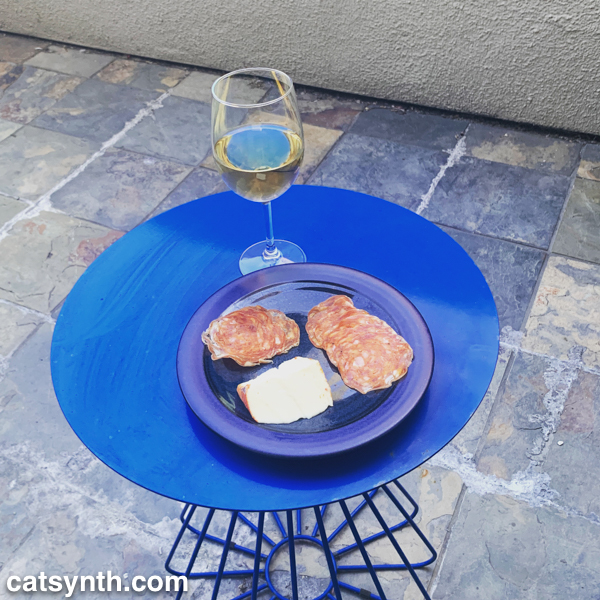
The first pairing features a dark zinfandel (Amador County) with dry Spanish chorizo; the second is a chardonnay with Port Salut cheese and a spicy calabrese salami. Indeed, it was the latter that inspired me to re-release the “commercial” as a standalone video.
Big Merp came over to sit underneath, probably in the hope that something would fall off the table.
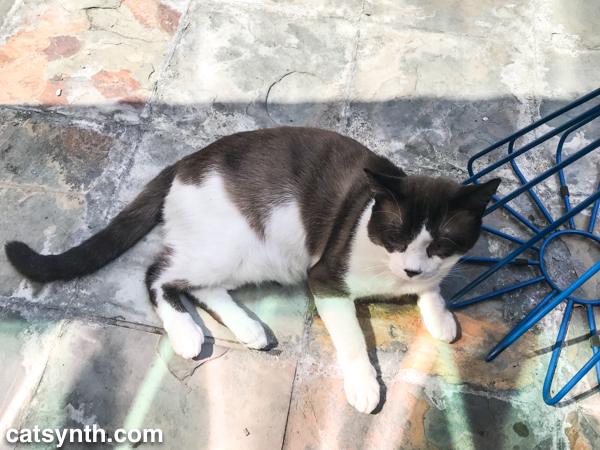
I like the way the combination of Merp’s fur, the afternoon light, and the colors of the slate contrast with the bright blue of the table.
We hope you are enjoying your weekend. For us, it’s back to the studio to work on our next video…
It’s been a little over a week since the 2019 Outsound New Music Summit and it seems a good time to look back over all five nights of adventurous musical programming. If you haven’t already seen our summary video with highlights from all ten acts, please check it out.
The concert series kicked off with a performance by the duo B Experimental Band, a large project led by Lisa Mezzacappa (bass) and Jason Levis (drums). They have been performing as a duo for a long time, taking on different challenges as their musical relationship has evolved. The latest is bringing their improvisational focus to a large group, i.e., maintaining spontaneity and musicality of improvisation while herding cats.

What I most noticed about this set was how sparse and spacious it was. In the first piece, space played an important visual as well as musical role, with different pairs of performers scattered around the concert hall. And towards the end, the full group thinned out to a single solo line from Polly Moller Springhorn on flute. The complete ensemble also included Bruce Ackley, Randy McKean, Cory Wright, and Joshua Marshall on woodwinds; Theo Padouvas and Rob Ewing on brass; and Gabby Fluke-Mogul (violin), Murray Campbell (octave violin), Shanna Sordahl (cello), and Kjell Nordeson on percussion.
By contrast, the second set featuring saxophone quartet Social Stutter was densely packed with rich harmonies and melodies. Composer and bandleader Beth Schenck makes the quartet – which also includes Phillip Greenlief, Cory Wright, and Casey Knudsen – function as a single instrument with some exquisitely beautiful chords and melodic lines. There was also space for each of the members to shine individually, with Knudsen’s fast runs, Greenlief’s unique timbres and keywork, and Wright solidly holding down the foundation on baritone sax. I was quite taken by this performance and now inspired to write my own compositions for saxophone quartet.
We always aim for a diversity of styles of music and instrumentation throughout the week, loosely categorized into nightly themes. For example, both of the bands that could be characterized as “rock music” were on the same night, but the two groups were still quite contrasting. Gentleman Surfer, a trio featuring Jon Bafus (drums), Barry McDaniel (guitar), and Zack Bissell (synthesizers) delivered a hard-driving set – my favorite moments were those where all three played unison syncopated rhythms complete with silences that were as intense as the sounds.
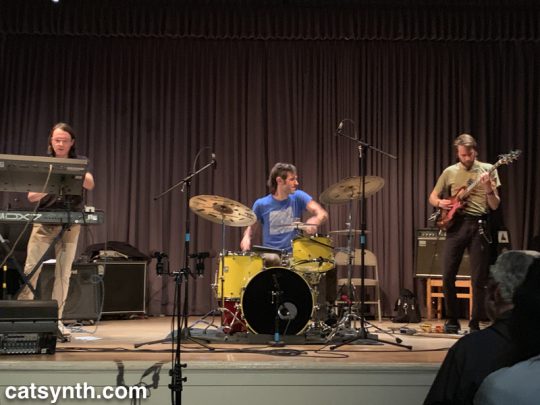
By contrast, Vegan Butcher’s set had a more plaintive, cerebral quality, due in large part to composer and bandleader John Shiurba’s “January Scale” and lyrics taken from his dream state just before waking up. The scale removes C-sharp, A-sharp, and F-sharp from the available twelve tones. This provides some interesting musical challenges. For example, a song centered in the “key” of F would have to avoid B-flat (A-sharp), and some keys like D become challenging indeed! The selection of chords to work around these gives the band’s music the plaintive sound. Their final song was particularly memorable, especially the section where rhythmic chords undergird the lyrics “I’m coming down from my stilts now, baby!” I found myself singing that for days afterward.
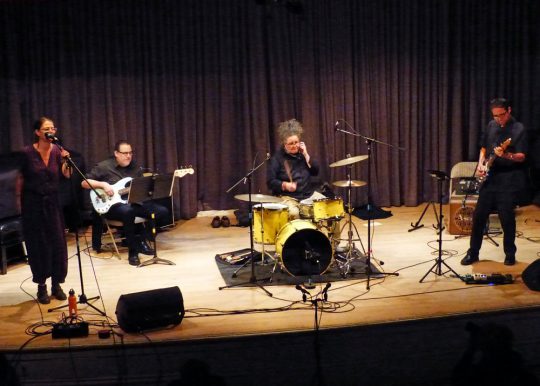
The next night again featured two contrasting sets. First was a very spare improvisation featuring Francis Wong on saxophone and Lenora Lee on dance/movement. Wong and Lee are longtime collaborators and have been working on both improvised and larger-scale compositions for two decades.
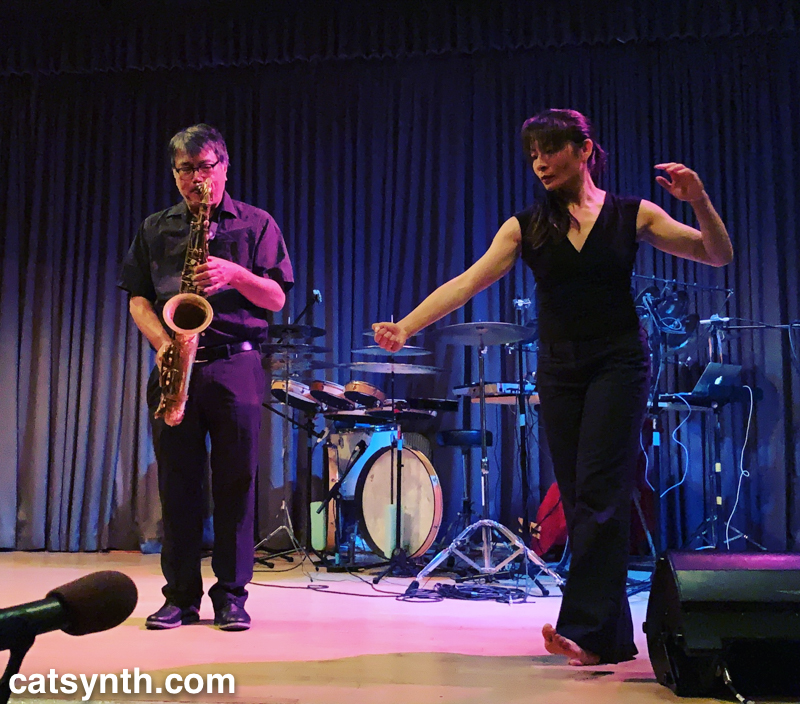
This performance, which made use of the space around the hall as well as the stage, was extraordinarily subtle and quiet as both the sound and movement bounced off the silent space – but at the same time forceful in the message it delivered, decrying all forms of violence and discrimination against immigrants and refugees from the Chinese Exclusion Act and the internment center on Angel Island to the images of mistreated children out our southern border today.
As with duo B and Social Stutter, the sparse nature of Wong and Lee’s performance was in sharp contrast to the lush landscapes of Andrea Centazzo’s solo set, with live percussion – drums, gongs, and his signature stacks of cymbals – set against both live and recorded electronics.
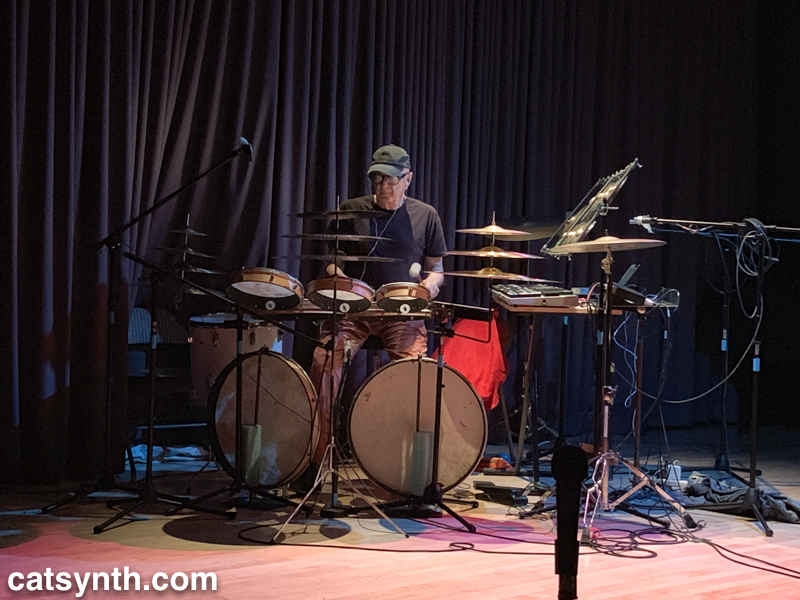
Centazzo’s solo performances often involve multimedia projections with the music. Sadly, this was not able to happen for this concert, but one could still “hear the images” of nature and remote places in his sounds, from the initial thundering drums to the gong array set against what sounded like singing monks.
The next night brought Polly Moller Springhorn’s much-anticipated Tomography Fortunae to the Outsound stage, or more specifically to the floor in the middle of the hall as the audience looked on from the edges. Her composition combines a variety of sounds with ritualistic movement and concept, all codified in a graphic score. The most unique element was the fact that all performers had to be named “Tom.” This comes from a longstanding observation that many of the musicians in the Bay Area new-music scene happen to be named Tom (or Matt, or David). The Toms on this occasion were Tom Djll, Tom Dimuzio, Tom Duff, Tom Dambly, Tom Nunn, Tom Scandura, and Tom Weeks.
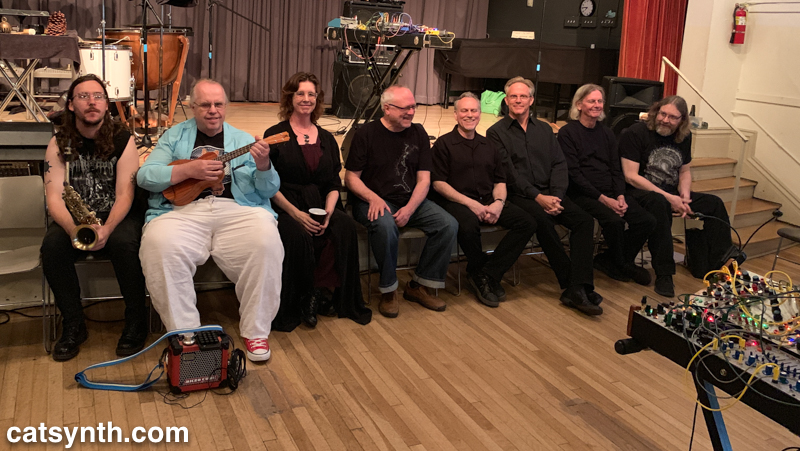
The piece unfolded as a series of three movements, each with more elaborate patterns of motion, ritualistic drawings, and numerical interplace. Most of the music was improvised within that framework, often bringing together pairs or trios of Toms for humorous interplay leading a loud and raucous finale with everyone playing. The whole experience was fascinating and fun.
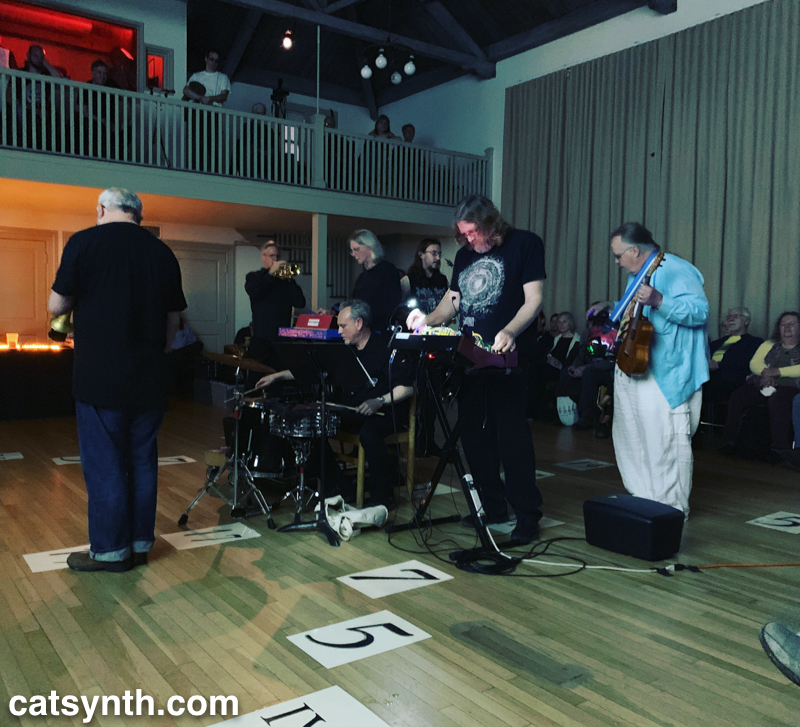
The next set brought together percussionist William Winant with Zachary James Watkins on guitar and electronics. The two had performed together before, but I still did not know what to expect. The set opened with Winant on pine cone and drum, with Watkins gradually building up high-pitched noisy sounds to fill the spaces in between. The guitar soon emerged with stronger electronic sounds as Winant shifted to his gongs and metal percussion.
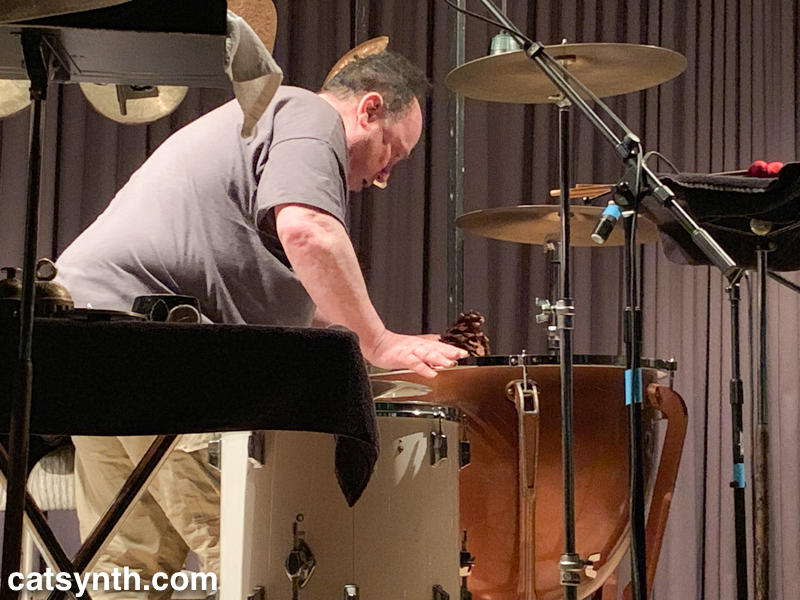
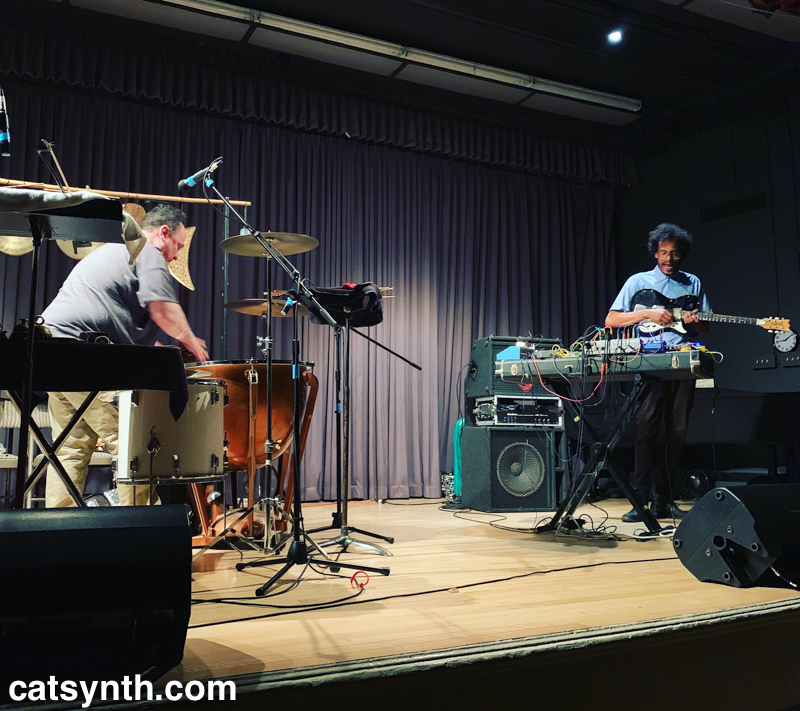
The sounds are fascinating but quite loud (especially for those of us who have maintained our high-frequency hearing) – and this was perhaps the most challenging moment of the entire festival. But things settled down again into a cloud of sound mixing percussion and electronics where the two became entangled.
The final night brought two veterans of the summit and of experimental jazz to the stage. Rent Romus (also the executive director of Outsound and the festival) teamed up with fellow woodwind multi-instrumentalist Keith Kelly for Deciduous, a set that unfolded as a collection of short stories, complete with characters, magic, and mischief. They were joined by Nava Dunkelman on percussion, Heikki Koskinen on e-trumpet, Gabby Fluke-Mogul on violin and Lisa Mezzacappa on bass.
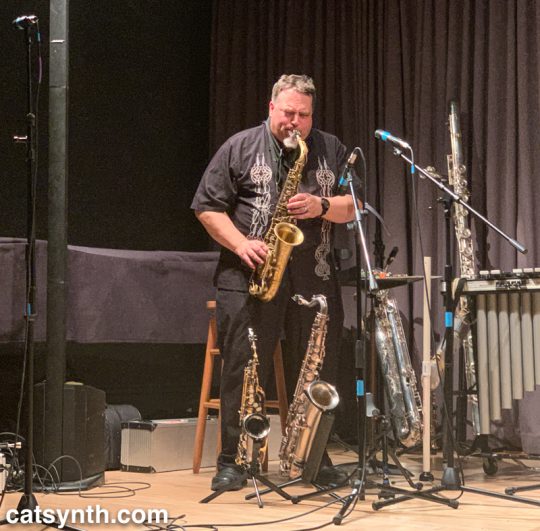
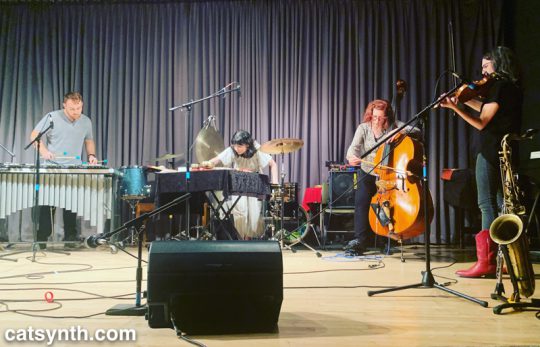
The final set brought back Vinny Golia and his wild collection of wind instruments to the Outsound Stage. In addition the more conventional baritone saxophone and bass clarinet, he also had a contrabass flute, a sopranino saxophone, and a rare G Mezzo-Soprano saxophone (which he describes in our preview video).
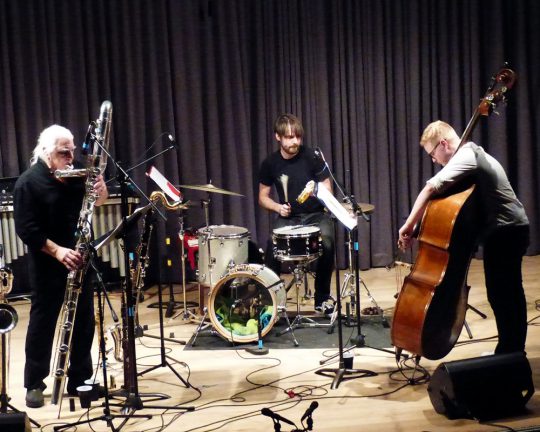
Golia was joined by Miller Wren on bass and Clint Dodson (drums). Originally, our friend Steve Adams was going to join them on saxophones but was unfortunately unable to make it for medical reasons. Fortunately, he appears to be much better and back to performing since then, and we wish him the best.
It’s particularly interesting to be present all nights and hear how the different artists and styles of music follow one another on the same stage. And I am glad to have been a part of it again this year both as a listener and part of the organizing committee.